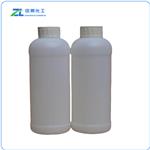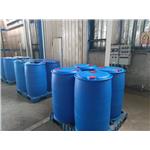- Pivaldehyde
-

- $0.00 / 1kg
-
2025-04-15
- CAS:630-19-3
- Min. Order: 10kg
- Purity: 99%
- Supply Ability: 1000
- Pivaldehyde
-

- $120.00 / 1kg
-
2025-04-15
- CAS:630-19-3
- Min. Order: 1kg
- Purity: 99%
- Supply Ability: 20ton
- Pivalaldehyde
-

- $190.00 / 1kg
-
2025-04-09
- CAS:630-19-3
- Min. Order: 1kg
- Purity: 96.0%
- Supply Ability: 500MT
|
| | Pivaldehyde Basic information |
| | Pivaldehyde Chemical Properties |
| Melting point | 6 °C(lit.) | | Boiling point | 74 °C730 mm Hg(lit.) | | density | 0.793 g/mL at 25 °C(lit.) | | refractive index | n20/D 1.378(lit.) | | Fp | 4 °F | | storage temp. | 2-8°C | | solubility | Chloroform, Ethyl Acetate (Slightly), Methanol (Slightly) | | form | Liquid | | color | Clear colorless | | Specific Gravity | 0.793 | | Water Solubility | Negligible | | Sensitive | Air Sensitive | | BRN | 506060 | | Dielectric constant | 9.0500000000000007 | | Stability: | Air Sensitive, Volatile | | InChIKey | FJJYHTVHBVXEEQ-UHFFFAOYSA-N | | CAS DataBase Reference | 630-19-3(CAS DataBase Reference) | | NIST Chemistry Reference | Propanal, 2,2-dimethyl-(630-19-3) | | EPA Substance Registry System | Propanal, 2,2-dimethyl- (630-19-3) |
| Hazard Codes | F,Xi,F+ | | Risk Statements | 11-37/38-43 | | Safety Statements | 16-23-33-24 | | RIDADR | UN 1989 3/PG 2 | | WGK Germany | 3 | | F | 8 | | TSCA | Yes | | HazardClass | 3 | | PackingGroup | III | | HS Code | 29121900 |
| | Pivaldehyde Usage And Synthesis |
| Description | Trimethylacetaldehyde (also known as Pivaldehyde) is the trimethyl
form of acetaldehyde. It is an aldehyde with a sterically bulky R
group, the tertiary-butyl group being attached to the carbonyl,
>C=O. It is a useful reagent in organic synthesis, pharmaceuticals,
agrochemicals and dyestuff. It is useful in streoselective synthesis
application as well as in aldol condensation reactions. As a
derivative of acetaldehyde, trimethyl acetaldehyde can be used for
the production of acetate. It can also be used as the precursor for
manufacturing of pyridine derivatives, pentaerythritol, and
crotonaldehyde. | | Chemical Properties | Clear colorless liquid | | Uses | Trimethylacetaldehyde is used as a stereoselective synthesis application. It is also used as a building block used in aldol condensation reactions. It is an important raw material and intermediate used in Organic Synthesis, Pharmaceuticals, Agrochemicals and Dyestuff. | | Uses | Commonly used building block in aldol condensation reactions. | | Definition | ChEBI: 2,2-dimethylpropanal is a member of the class of propanals that is propanal substituted by two methyl groups at position 2. It is a member of propanals and a 2-methyl-branched fatty aldehyde. | | Application | Pivaldehyde is a hazardous by-product released from engine exhaust and is often used as a raw material for organic synthesis or as a reagent in chemical reactions. It can be copolymerised with aldehyde anions, such as acrolein, to prepare unsaturated polyacetals, or a TBPB initiated decarbonylative cascade cyclization of ortho-cyanoarylacrylamides with pivaldehyde leads to tert-butyl containing quinolone-2,4(1H,3H)-diones by formation of both C(sp3)–C(sp3) and C(sp3)–C(sp2) bonds. As well as probing the absolute rate constants of its autoxidation, etc[1-3].
| | References | [1] A. LAPENA R. S J L Mateo. Anionic copolymerization of acrolein with aldehydes. III[J]. Journal of Polymer Science: Polymer Symposia, 1973, 42 1: 311-319. DOI:10.1002/polc.5070420133.
[2] CUI ZHANG. Decarbonylative cascade cyclization of ortho-cyanoarylacrylamides with pivaldehyde: Access to tert-butyl containing quinolone-2,4(1H,3H)-diones[J]. Tetrahedron, 2022. DOI:10.1016/j.tet.2021.132547.
[3] G. ZAIKOV K. I J Howard. Absolute rate constants for hydrocarbon autoxidation. XIII. Aldehydes: photo-oxidation, co-oxidation, and inhibition[J]. Canadian Journal of Chemistry, 1969. DOI:10.1139/V69-500.
[4] Ho, Tse Lok, et al. Pivaldehyde. Fieser and Fieser's Reagents for Organic Synthesis. John Wiley & Sons, Inc. 2006.
[5] https://en.wikipedia.org/wiki/Acetaldehyde#Uses
[6] https://en.wikipedia.org/wiki/Pivaldehyde
[7] https://www.alfa.com/en/catalog/A15013/
[8] GEORGE A. OLAH. Acid-Catalyzed Isomerization of Pivalaldehyde to Methyl Isopropyl Ketone via a Reactive Protosolvated Carboxonium Ion Intermediate?[J]. Journal of the American Chemical Society, 2001, 123 47: 11556-11561. DOI:10.1021/ja011253a.
[9] O. SUGIMOTO. Preparation and reaction of quinolinyl (or pyridinyl)phosphonium salts with base and pivalaldehyde[J]. Heterocycles, 2011, 56 1: 837-847. DOI:10.3987/COM-11-12154.
[10] SUNG MAN PARK Chan H K Yu Ran Lee. Conformational Structures of Neutral and Cationic Pivaldehyde Revealed by IR-Resonant VUV-MATI Mass Spectroscopy.[J]. International Journal of Molecular Sciences, 2022, 23 23. DOI:10.3390/ijms232314777. |
| | Pivaldehyde Preparation Products And Raw materials |
| Raw materials | 3,3-Dimethyl-2-oxobutyric acid-->2-hydroxy-2-methylpropionaldehyde | | Preparation Products | neopentyl glycol-->Clomazone-->(S)-2-Methylproline-->METHYL ISOCYANOACETATE-->N-(Trimethylsilyl)-2,2-dimethylpropane-1-imine-->2,2-DIMETHYL-3-HEXANOL-->1,9-BIS-BOC-1,5,9-TRIAZANONANE-->methyl (2S)-2-amino-3,3-dimethylbutanoate-->2,2-DIMETHYL-3-HEXANONE-->(2S,5S)-(-)-2-TERT-BUTYL-3-METHYL-5-BENZYL-4-IMIDAZOLIDINONE-->Ethyl pivaloylacetate-->2-AMINO-5-TERT-BUTYL-1,3,4-THIADIAZOLE-->2R,5S)-5-benzyl-2-tert-butyl-3-MethyliMidazolidin-4-one |
|